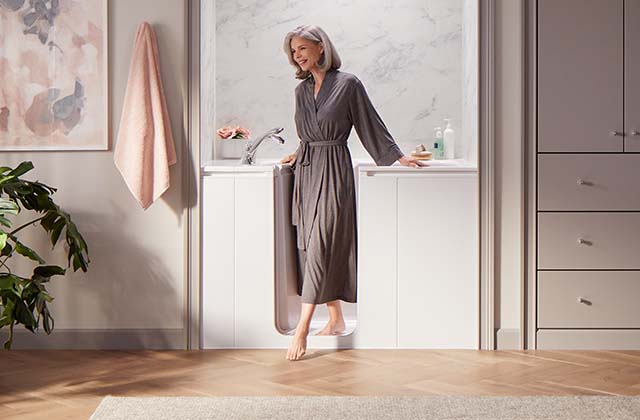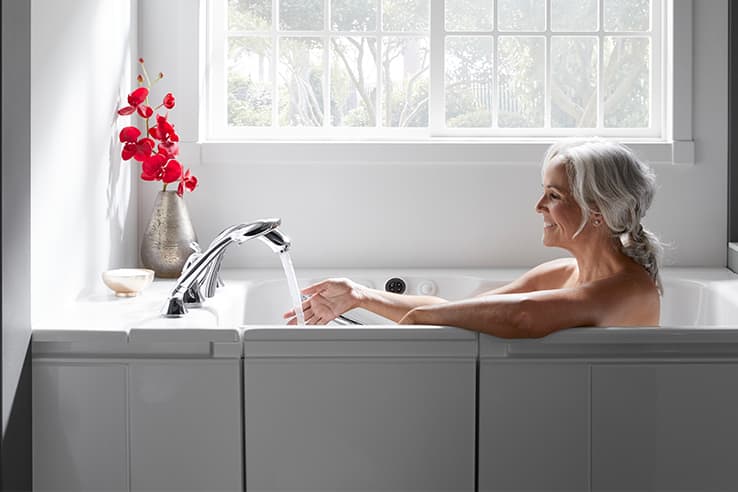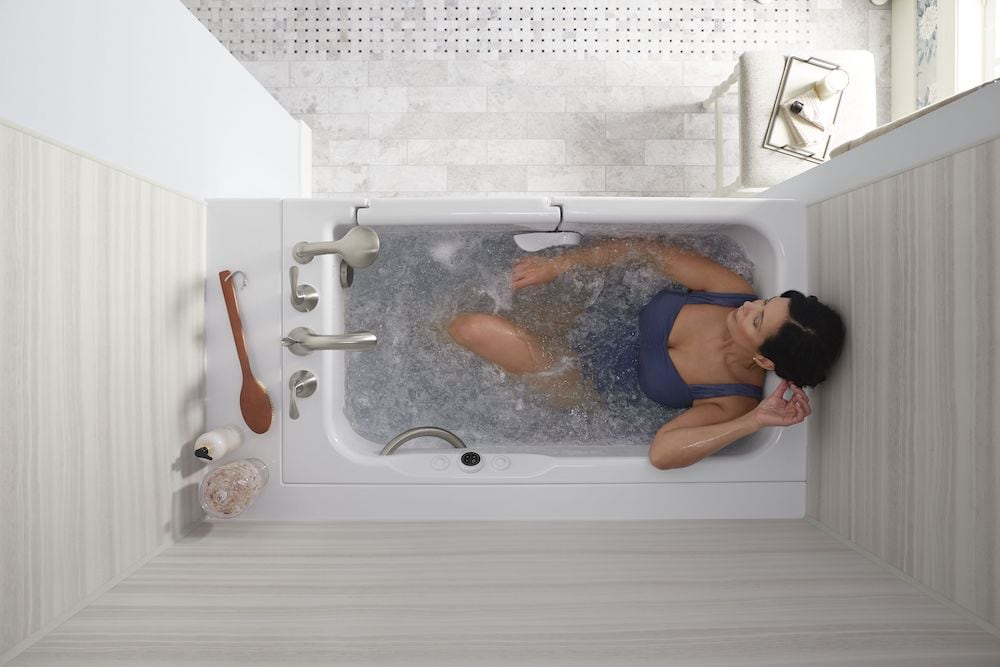- Lifestyle
- Lifestyle
Will Medicare Pay for a Walk-In Tub?

Unfortunately for seniors, Medicare does not typically pay for a walk-in tub. The program covers products considered to be “durable medical equipment,” i.e., durable equipment or devices that are medically required by a doctor to be used in the home and not typically useful to someone who isn’t sick or disabled. Because walk-in tubs are not classified in this way, Medicare usually will not cover them.
The upside is there are alternative finance options to purchase a walk-in tub. Learn if you may qualify for financial assistance through one of the programs, plans or grants listed below.
Other Financial Assistance Options
Medicare for Walk-In Tubs
In rare situations, original Medicare may make an exception and cover the cost of a walk-in tub. However, you’d receive a reimbursement instead of an upfront payment. This means there is no guarantee that original Medicare would offer financial assistance until after you paid out of pocket and submitted a claim.
To submit a claim, you have to prove the walk-in tub was an absolute medical necessity through a written medical diagnosis made by a doctor, which would include the reasons for why it’s needed and any essential features specific to a brand.
If you choose to go this route, you should be prepared to pay the full cost of the walk-in tub and additional installation costs, or seek other financial assistance.
Medicare Advantage (MA) Plans
Getting original Medicare to pay for a walk-in tub is often a hassle and rarely delivers the outcome you want. Your best chance of receiving financial assistance through Medicare is with Medicare Advantage (MA) plans, or Plan C, which enables private insurance companies to contract with Medicare. Due to an expansion of health-related supplemental benefits in 2019, some MA plans will cover the cost of a walk-in tub.
Not all MA plans are alike, so it’s important you talk to your plan’s representative about the types of benefits they offer. To learn more about your specific coverage, contact Medicare.
Medicaid for Walk-In Tubs
Compared to Medicare Advantage plans, Medicaid is more likely to pay for a walk-in tub. Because each state offers several different Medicaid programs, there is no universal rule governing its policy on home modifications. Contact your representative to confirm if your plan covers the cost of a walk-in tub.
Home and Community-Based Services (HCBS)
You should also consider Medicaid’s Home and Community-Based Services (HCBS) Waiver program. This program enables those with significant physical and cognitive limitations to receive services in their own home or community. Depending on which state you live, an HCBS waiver may pay for specialized medical equipment and environmental accessibility modifications, which can include the purchase and installation of a walk in tub.
To determine if your state’s Medicaid waivers will pay for a walk in tub, contact the Center for Medicaid and CHIP Services (CMCS).
Veterans Benefits for Walk-In Tubs
The Department of Veterans’ Affairs offers several programs that provide financial assistance for the purchase and installation of a walk in tub. Read on to learn if one of these options is right for you.
Home Modification Grants
Disabled veterans who are eligible may apply for grants to install home modifications that support disabilities related to their military service or resulting from aging. The two grants include:
- Specially Adapted Housing (SAH) Grant
- Special Home Adaptation (SHA) Grant
Veterans Directed Home and Community Based Services (VD-HCBS)
This program is modeled after Medicaid’s HCBS Waiver program. Participants receive a set budget to spend at their discretion on care services and supplies they elect as a medical necessity. As such, veterans may use a portion of the funds to purchase and install a walk-in tub or shower.
VA Aid and Attendance, Housebound and other Pensions
These pensions offer greater freedom to decide how the allowance is spent. With the only stipulation that it be used for the care of the beneficiary, a walk-in tub is an appropriate expense. The cost of a walk-in tub can also be considered an unreimbursed medical expense, which means it can be deducted from a veteran’s income. In turn, the veteran’s pension benefit will increase in the amount of the deduction, essentially covering the cost of the tub.
To learn more about veterans benefits, please contact your regional VA office or check out our blog.
Grants for Walk-In Tubs
The “Rural Repair and Rehabilitation Loans and Grants for Seniors” is a housing repair program offered by the US Department of Agriculture. This program assists seniors living on a low income in rural areas by offering grants that can cover home repairs, improvements or modifications to their home. It also applies to home modifications and accessibility features that eliminate health and safety hazards, including the cost of a walk-in tub.
You can begin the application process by contacting your local USDA service center.
Financing Plans for Walk-In Tubs
Accessible bathing is an important investment to help you continue living in the home you love. At KOHLER, we are committed to offering walk-in tubs that blend the best in safety, comfort and affordability. We offer financing plans for all walk‑in baths as well as monthly offers to make the bath even more affordable.
Plus, we promise to give you the exact cost down to the penny during your consultation, so there are no surprise fees or hidden costs on installation day. You can also learn more about what goes into the total cost of the Walk-In Bath by exploring our Price Guide. Contact your local KOHLER Authorized Dealer to schedule a free in-home quote today.
Enjoy A Better Bathing Experience Sooner
You’re on your way to a safer, more comfortable bathing experience. Contact the individual programs and departments to see if you may qualify to receive financial assistance for a walk-in tub. You can also contact your local KOHLER Authorized Dealer for more information at (800) 707-5276.
Schedule your free consultation today.
Contact Us

